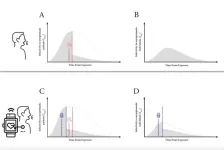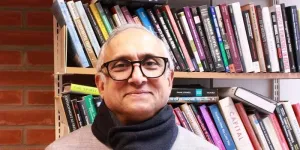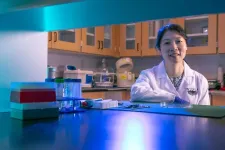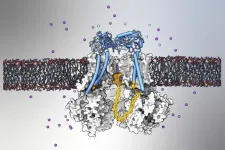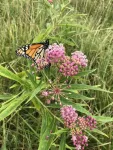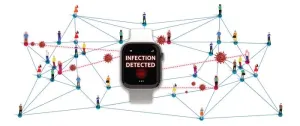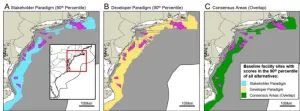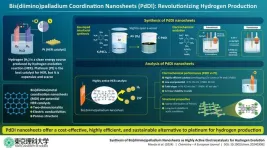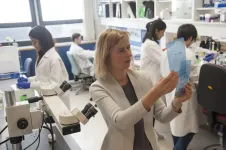(Press-News.org) Everyday smartwatches are extremely accurate in detecting viral infection long before symptoms appear — now, research shows how they could help stop a pandemic before it even begins.
Early detection of sickness is critical for preventing its spread — whether it’s COVID-19, influenza or the common cold. Yet, many illnesses are at their most contagious before people even know they’re sick. Research shows that 44 percent of COVID-19 infections were spread several days before the sufferer came down with symptoms.
Now, researchers at Aalto University, Stanford University and Texas A&M, have released a study that models how smartwatches could provide a simple and effective way to dramatically minimise the unwitting spread of disease in pre-symptomatic or asymptomatic people. The research, published in prestigious US journal PNAS Nexus on March 4, reveals a powerful new tool for pandemic management.
‘Unlike during the pandemic, we now have concrete data on how pandemics develop, and how effective different measures are at curbing the spread. Add to this that wearable technology is now extremely effective when it comes to detecting the very early physiological signs of infection, and we are much better prepared,’ says Märt Vesinurm, from Aalto University in Finland.
How an early ‘ping’ could flatten the curve
Numerous studies have proven the accuracy of wearable devices when it comes to recognising the physiological markers of various illnesses several days before the wearer themself. For example, everyday smartwatches can tell with 88 percent accuracy — from respiration and heart rate, skin temperature and other markers — if you’re coming down with COVID-19. And their accuracy rises to 90 percent accuracy for the flu, Vesinurm says. On average, people reduce social contact between 66-90 percent from the point when they realise they’re sick, even when not in a pandemic situation.
‘Even at the lower end of compliance, if people receive and act on an earlier warning by self-isolating, the impact is significant. Even just a 66-75 percent reduction in social contacts soon after detection by smartwatches — keeping in mind that that’s on a par with what you’d normally do if you had cold symptoms — can lead to a 40-65 percent decrease in disease transmission compared to someone isolating from the onset of symptoms,’ says Vesinurm.
Notably, the research shows that higher compliance, such as that seen in a pandemic situation, could effectively stop a disease in its tracks. So, could smartwatches help us manage potential H5N1 (avian flu) epidemic?
‘I see no reason why not,’ says Vesinurm. ‘As we gather more specific data about how different illnesses affect these measurements, there’s no reason we couldn’t distinguish between diseases, from bird flu and HIV to the common cold, especially when used in conjunction with advanced machine learning methods and other data from the user.’
Towards smarter pandemic policies
The team of researchers are the first to take real world data from numerous peer-reviewed epidemiological, biological and behavioural studies, drawing it together to mathematically model how infection spreads at a population level. Through this powerful combination of data and tech, Vesinurm foresees a future in which smartwatches change the way we deal with pandemics, at both individual and policy level.
‘People are used to wearable devices and they’re likely to trust them. While they’re not yet diagnostic, they could help make unpopular approaches like masks, lockdowns and invasive testing more targeted and less of a blunt instrument,’ he says. An early warning from your smartwatch would be the cue to take other actions, like getting a PCR test, wearing a mask, or ‘not visiting your grandma’. The action would depend on the social context at the time, and an individual’s assessment of risk.
Having this information not only empowers individuals to make choices that keep their loved ones or community safe, but it also gives decision-makers a powerful tool.
‘It could be that governments find it most cost effective in a pandemic situation to provide every person who wants one with a smartwatch — although of course, this comes with its own ethical considerations,’ says Vesinurm. ‘Either way, with early detection literally at our fingertips, I see a lot of reason to hope.’
END
Study: Smartwatches could end the next pandemic
Everyday smartwatches are extremely accurate in detecting viral infection long before symptoms appear — now, research shows how they could help stop a pandemic before it even begins.
2025-03-04
ELSE PRESS RELEASES FROM THIS DATE:
Equal distribution of wealth is bad for the climate
2025-03-04
Both the UN and several Nobel laureates have said that political and economic inequality is a driver of high carbon emissions.
The argument is that more democratic societies – where wealth, power and opportunities are more evenly distributed – are better at reducing their emissions.
But that is not true – quite the opposite.
“Some people hold that a rich power elite stands in the way of climate action, and that democracies can more easily implement measures such as banning emissions or raising taxes,” said Professor Indra de Soysa from the Norwegian ...
Evidence-based strategies improve colonoscopy bowel preparation quality, performance, and patient experience
2025-03-04
EMBARGOED FOR RELEASE
Tuesday, March 4, 2025 at 9:00 am Eastern Time
An advanced copy of the full recommendation is available upon request.
Media Contacts
American College of Gastroenterology
Becky Abel mediaonly@gi.org (301) 263-9000
American Gastroenterological Association
Annie Mehl communications@gastro.org (301) 272-0013
American Society for Gastrointestinal Endoscopy
Andrea Lee alee@asge.org (630) 570-5601
North Bethesda, MD; Bethesda, MD; and Downers Grove, IL (March 4, 2025) ...
E. (Sarah) Du, Ph.D., named Senior Member, National Academy of Inventors
2025-03-04
E. (Sarah) Du, Ph.D., an associate professor in College of Engineering and Computer Science at Florida Atlantic University, has been selected as a Senior Member of the National Academy of Inventors (NAI) for her significant contributions to innovation and invention.
The NAI is a member organization comprising United States and international universities, government agencies, and nonprofit research institutes. The NAI was founded to recognize and encourage inventors with U.S. patents, enhance the visibility of academic ...
Study establishes “ball and chain” mechanism inactivates key mammalian ion channel
2025-03-04
A new study has unveiled a precise picture of how an ion channel found in most mammalian cells regulates its own function with a “ball-and-chain” channel-plugging mechanism, according to investigators at Weill Cornell Medicine. The findings boost the understanding of ion channel biology and could lead to new drugs that target these channels to treat disorders such as epilepsy and hypertension.
Ion channels are protein structures embedded in cell membranes that allow charged molecules to flow into or out of the cell. They support essential biological functions, including signaling or communication between brain cells. The study, published ...
Dicamba drift: New use of an old herbicide disrupts pollinators
2025-03-04
March 4, 2025
Contact: Morgan Sherburne, 734-647-1844, morganls@umich.edu
Images of pollinators and plants
ANN ARBOR—An herbicide may "drift" from the agricultural fields where it's sprayed and harm weeds that grow at the edge of the fields, impacting pollinators.
A University of Michigan study examined the effects of the herbicide, called dicamba, and found that plants exposed to dicamba drift had a lowered abundance of pollinators, and that pollinator visits to flowers were reduced for some weeds, but not others. The study, led by U-M professor of ecology and evolutionary biology Regina Baucom, ...
Merging schools to reduce segregation
2025-03-04
Racial segregation remains common in US schools, 70 years after federal legislation formally outlawing segregation by race. But previous research has demonstrated that integration can benefit students of all races and ethnicities. Students at integrated schools learn how to make connections with children from different backgrounds, developing empathy and mutual respect. Madison Landry and Nabeel Gillani explored whether merging schools could help integrate schools. One school could offer kindergarten through second grade for the current catchment areas of two elementary schools, while the remaining school could serve third through fifth graders for the ...
Ending pandemics with smartwatches
2025-03-04
Your smartwatch can probably tell that you are sick before you can—and if everyone followed their watch’s advice to self-isolate, incipient epidemics could be stopped in their tracks, according to a study.
During the early days of COVID-19, research showed that 44% of infections were spread before people even felt sick, making early detection critical for stopping outbreaks. Recent studies have demonstrated that smartwatches can detect infections before symptoms appear by picking up subtle physiological changes, ...
Mapping consensus locations for offshore wind
2025-03-04
Ideal locations and scales for offshore wind installations depend on both physical conditions and social acceptability. Rudolph Santarromana and colleagues conducted a spatial multi-criteria analysis considering both techno-economics and a socio-environmental impacts, including a broad range of possible concerns, including visual, fishing, marine life, and vessel traffic impacts. Fifty-eight percent of plant location alternatives are suitable from the perspective of developers (techno-economic perspective), but just eighteen percent of sites are suitable from the perspective of a broad range of external stakeholders (socio-environmental perspective). ...
Breakthrough in clean energy: Palladium nanosheets pave way for affordable hydrogen
2025-03-04
Hydrogen energy is emerging as a key driver of a clean, sustainable future, offering a zero-emission alternative to fossil fuels. Although it is promising, the large-scale production of hydrogen relies heavily on expensive platinum-based catalysts, and hence affordability remains a major challenge for the industry.
To surpass this, researchers from the Tokyo University of Science (TUS) have developed a novel hydrogen evolution catalyst, bis(diimino)palladium coordination nanosheets (PdDI), that offers platinum-like efficiency at a fraction of the cost. Their groundbreaking study, which was published on November ...
Novel stem cell therapy repairs irreversible corneal damage in clinical trial
2025-03-04
An expanded clinical trial that tested a groundbreaking, experimental stem cell treatment for blinding cornea injuries found the treatment was feasible and safe in 14 patients who were treated and followed for 18 months, and there was a high proportion of complete or partial success. The results of this new phase 1/2 trial published March 4, 2025 in Nature Communications.
The treatment, called cultivated autologous limbal epithelial cells (CALEC), was developed at Mass Eye and Ear, a member of the Mass General Brigham healthcare system. The innovative procedure consists of removing stem cells from a healthy eye with ...
LAST 30 PRESS RELEASES:
New expert guidance urges caution before surgery for patients with treatment-resistant constipation
Solar hydrogen can now be produced efficiently without the scarce metal platinum
Sleeping in on weekends may help boost teens’ mental health
Study: Teens use cellphones for an hour a day at school
After more than two years of war, Palestinian children are hungry, denied education and “like the living dead”
The untold story of life with Prader-Willi syndrome - according to the siblings who live it
How the parasite that ‘gave up sex’ found more hosts – and why its victory won’t last
When is it time to jump? The boiling frog problem of AI use in physics education
Twitter data reveals partisan divide in understanding why pollen season's getting worse
AI is quick but risky for updating old software
Revolutionizing biosecurity: new multi-omics framework to transform invasive species management
From ancient herb to modern medicine: new review unveils the multi-targeted healing potential of Borago officinalis
Building a global scientific community: Biological Diversity Journal announces dual recruitment of Editorial Board and Youth Editorial Board members
Microbes that break down antibiotics help protect ecosystems under drug pollution
Smart biochar that remembers pollutants offers a new way to clean water and recycle biomass
Rice genes matter more than domestication in shaping plant microbiomes
Ticking time bomb: Some farmers report as many as 70 tick encounters over a 6-month period
Turning garden and crop waste into plastics
Scientists discover ‘platypus galaxies’ in the early universe
Seeing thyroid cancer in a new light: when AI meets label-free imaging in the operating room
Neutrophil-to-lymphocyte ratio may aid risk stratification in depressive disorder
2026 Seismological Society of America Annual Meeting
AI-powered ECG analysis offers promising path for early detection of chronic obstructive pulmonary disease, says Mount Sinai researchers
GIMM uncovers flaws in lab-grown heart cells and paves the way for improved treatments
Cracking the evolutionary code of sleep
Medications could help the aging brain cope with surgery, memory impairment
Back pain linked to worse sleep years later in men over 65, according to study
CDC urges ‘shared decision-making’ on some childhood vaccines; many unclear about what that means
New research finds that an ‘equal treatment’ approach to economic opportunity advertising can backfire
Researchers create shape-shifting, self-navigating microparticles
[Press-News.org] Study: Smartwatches could end the next pandemicEveryday smartwatches are extremely accurate in detecting viral infection long before symptoms appear — now, research shows how they could help stop a pandemic before it even begins.
